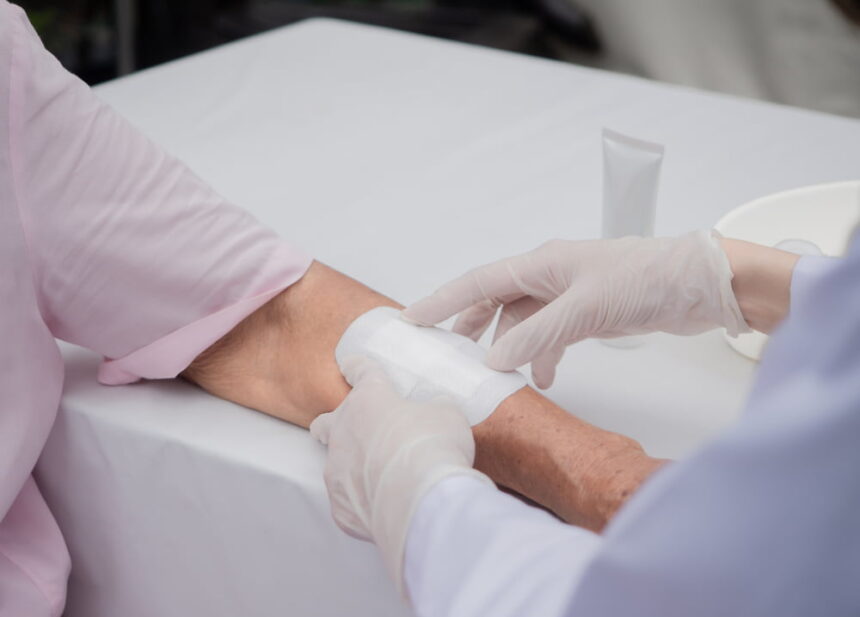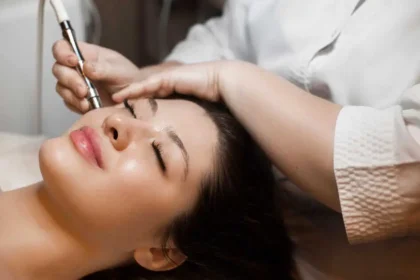Specialized medical attention may be required for foot and ankle wounds that do not heal in a timely and orderly manner. As medical technology advances, new methods and materials support healing, making challenging injuries more recoverable. These advancements cover a range of applications, from new types of skin grafts to innovative debridement techniques. Here is more information about advancements in wound care:
Improved Skin Grafts
Skin grafts involve transplanting skin to the foot or ankle areas where skin is lost or damaged. Surgeons now use tools with enhanced precision, which allows for the harvesting of thinner, more uniform grafts that integrate better with the recipient site. These technical improvements in instrumentation help minimize donor site morbidity, and they aid in a more predictable healing process.
Significant advancements have also been made in preparing the patient’s own skin for grafting. Techniques are now more refined, enabling surgeons to expand the skin’s surface area carefully. This expansion allows a smaller piece of donor skin to cover a much larger wound, which is especially beneficial when donor sites are limited. This method aims for a supportive environment for new skin growth.
The use of skin grafts for wound care is another advancement in this field. Modern approaches to wound management create a highly controlled environment around the graft. These advanced supportive therapies help the graft attach firmly and promote healthy blood vessel development. By carefully managing fluid levels, these new care strategies play a key role in healing.
Bioengineered Skin Substitutes
Bioengineered skin substitutes offer an alternative when a patient’s own skin is not available or suitable for grafting. These products are developed in a laboratory, and they can be derived from natural cells or created from synthetic materials. The primary purpose of these substitutes is to provide temporary or permanent coverage for wounds. It may protect them from infection and fluid loss while healing occurs.
There are various categories of skin substitutes, each designed for specific wound types and clinical situations. Some are acellular dermal matrices that provide a scaffold for the patient’s own cells to populate and regenerate new tissue over time. Others are cellular, ingredients that actively contribute to the healing process. These materials represent a significant resource in managing complex wounds, especially extensive burns or chronic ulcers.
Surgical Debridement Treatments
Surgical debridement removes unhealthy tissue from a wound to promote healing. New technologies aim to make this process more precise. Low-frequency ultrasound debridement uses acoustic energy to fragment and remove debris without harming healthy tissue. This selective approach prepares the wound bed effectively for further treatment.
- It fragments nonviable tissue.
- It reduces the bacterial load.
- It stimulates cell activity.
Aggressive Offloading
Aggressive offloading is a method podiatrists use to relieve pressure from wounds, particularly diabetic foot ulcers. The goal is to prevent mechanical stress that can impede healing, so total contact casting is a standard technique professionals use to redistribute weight away from the ulcerated area. This immobilization protects the wound from repetitive trauma. It is a key component of treating plantar ulcers.
Get Advanced Wound Care
These advancements provide clinicians with more options for managing complex and non-healing wounds, from improved skin grafting methods to innovative debridement tools and offloading strategies. Understanding these options is part of developing a comprehensive treatment plan for patients. If you are dealing with a non-healing foot or ankle wound, speak with a podiatrist to learn more about treatment options that may be right for you.









